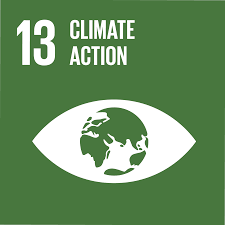This Simple Step Could Reduce 44 Million Tons of CO2 in the Air
- Rhea

- Sep 8, 2020
- 4 min read
Updated: Sep 11, 2020
This article is focused on the following Sustainable Development Goals:
What I love about this generation is that we take matters into our own hands. We see a problem? We advocate for it, we protest about it, and we fight for it. However, COVID-19 has made many rethink our safety and health. This has resulted in many of us staying at home, scrolling through our phones all day and getting overwhelmed with yet another surge in COVID-19 cases. You may feel helpless but you can still make a difference. From the comfort of your home, here’s how you can stop emitting carbon dioxide into the atmosphere. But first, we need to understand how electricity contributes to climate change.
The generation of electricity requires the combustion of fossil fuels to take place, specifically coal. This leads to an increase in CO2 emissions in the air and thus, will worsen the problem of climate change. How harmful is the combustion of coal generating electricity exactly? In the United States, coal supplies 57% of the energy needed for the generation of electricity, meaning that about 85% of all coal consumed in the U.S. is used for electricity generation. Although this only measures how much the U.S. generates electricity, it helps you understand how big the harmful effects could be across the world. This is why many activists fight towards switching our main source of energy to renewable energy.
However, not everybody is in a position to do so. Although renewable energy costs are decreasing over the years, it is still expensive for nations to invest in renewable energy in the short-term, as there are other immediate problems they need to tackle first. In many countries, well-established fossil fuel firms also have a role in which policies can be implemented and governments have no problem spending millions of dollars on subsidies for fossil fuel firms every year.
Despite the fact that change needs to happen at a government level, that doesn’t mean we still can’t help. If you’re in a position where you can’t switch your energy source to renewable energy, here’s what you can do.

Unplug your appliances. Don’t just turn off the switch, but unplug them. Many appliances use relatively the same amount of energy when they’re off, compared to when they’re on. Don’t believe me? Tatiana Schlossberg, a reporter of the New York Times, measured the amount of energy used when appliances are on and when they’re off and the results may shock you (Schlossberg).

The picture above shows the amount of energy appliances use when they’re on, compared to when they’re off. The electricity consumed is measured in watts (W). As you can see, these appliances use relatively the same amount of energy. Even simple appliances, like kettles and coffee makers still consume a lot more electricity than we realise.

Okay, so now we know how much these appliances consume. You may think to yourself, “I’m just one person doing this and it’s not like it will affect anything significantly anyway.”
According to the Natural Resources Defense Council, plugged-in appliances that are not in use cost about $165 per household (Vadim). Not that much? That is $19 billion across the U.S. just from not unplugging your appliances, an entire nation generates 44 million tons of CO2. Imagine if we measured how much this happened on a global scale. In relation to SDG #13: Climate action, ordinary citizens have the power to stop emitting a significant amount of carbon emissions. You could save, according to the Department of Energy of the United States, an entire month’s energy bill of a single family’s home. Not only will this help the environment, but it will also help you save money. And who could possibly say no to lower electricity bills?
However, this solution would be worthwhile if all of us could do it together. With reference to SDG #17: Partnership for the Goals, it’s important we come together as a global community and take necessary action. So unplug those appliances when they’re not in use. Tell your friends and family to do this so we can reduce CO2 being emitted into the atmosphere. Sometimes our laziness can control us, but we need to remember that we are doing this for generations to come. Then, you can pat yourself on the back for doing the right thing.
Pro tip: Screensavers on your laptops don’t work. You’re still wasting energy there. Instead, shut down your laptop. Waiting a few extra seconds for your laptop to turn on when you’re dying to rewatch another episode of Friends won’t hurt you, I promise.
External Resources
If you want to learn more about how your devices can consume more energy than you realise, check out this New York Times article.
Works Cited
“Barriers to Renewable Energy Technologies.” Union of Concerned Scientists, www.ucsusa.org/resources/barriers-renewable-energy-technologies.
Electricity and Climate Change, www.powerscorecard.org/issue_detail.cfm?issue_id=1.
“Learn about Energy and Its Impact on the Environment.” EPA, Environmental Protection Agency, 12 Aug. 2019, www.epa.gov/energy/learn-about-energy-and-its-impact-environment.
Schlossberg, Tatiana. “Just How Much Power Do Your Electronics Use When They Are 'Off'?” The New York Times, The New York Times, 7 May 2016, www.nytimes.com/2016/05/08/science/just-how-much-power-do-your-electronics-use-when-they-are-off.html.
Vadim, Vanessa. “Should I Unplug My Appliances And, If So, Will I Save Money on My Electric Bill?” Treehugger, www.treehugger.com/should-i-unplug-my-appliances-and-if-so-will-i-save-money-4864312.






Comments